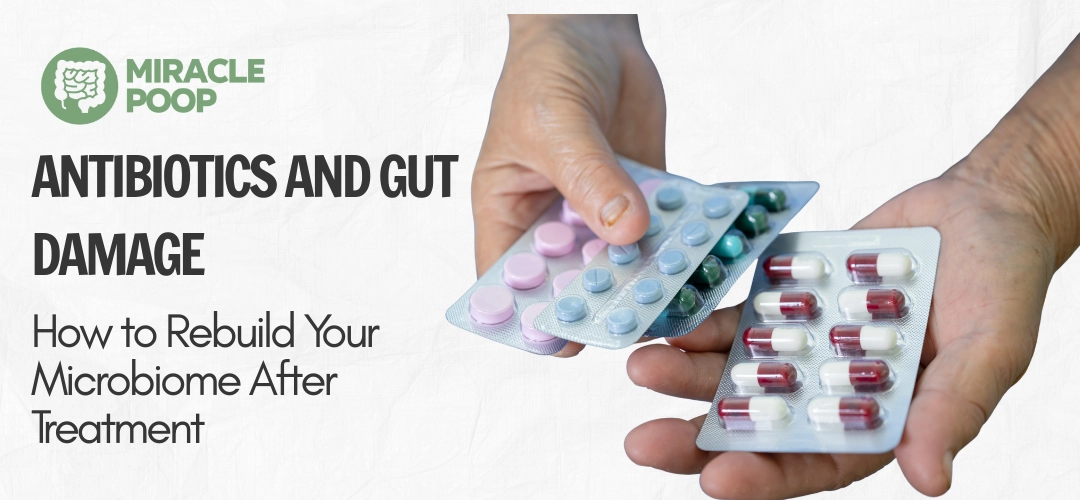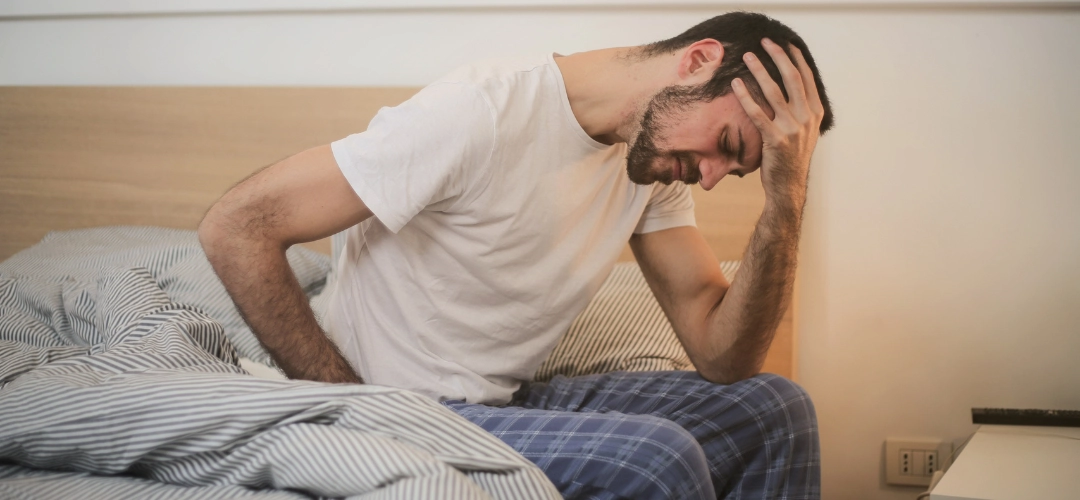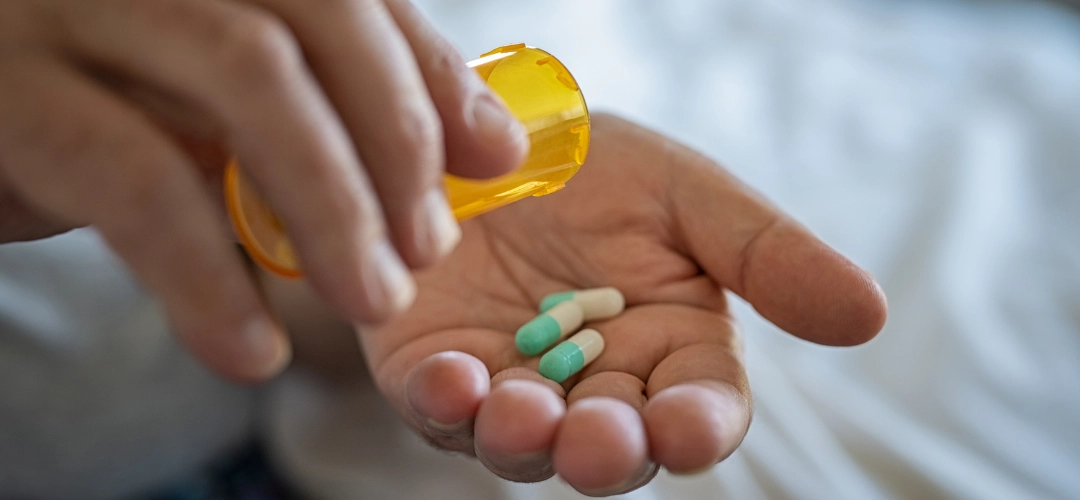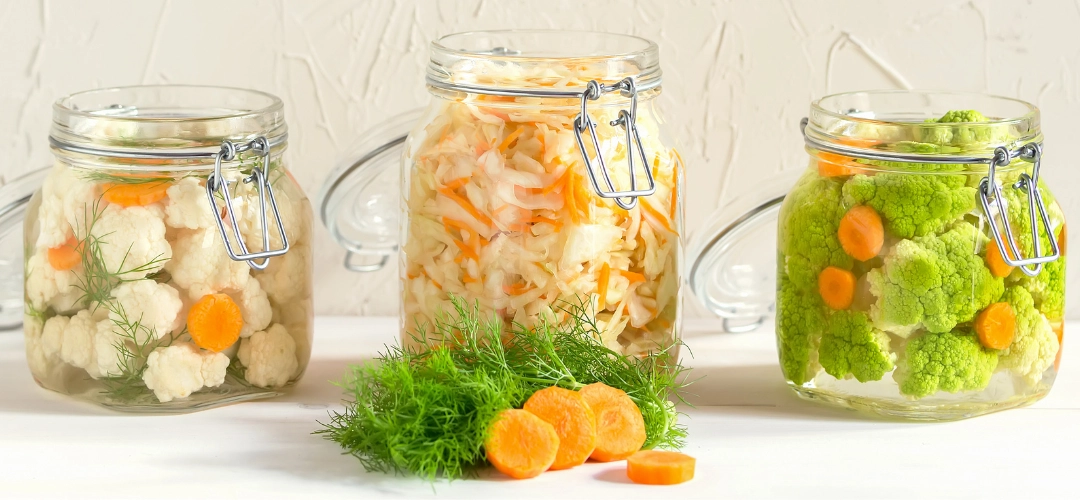Antibiotics are life-saving medicines, but they can also leave your gut in ruins
If you’ve just finished antibiotics, you can rebuild microbiome after antibiotics with a few science-backed steps. In this guide you’ll learn common post-antibiotic symptoms, the foods that help good bacteria return, when probiotics make sense, and a simple 7-day routine to start recovery today.
In this post, you’ll learn what happens to your microbiome during antibiotic use and how to repair and restore your gut health afterward.

1. What Antibiotics Do to Your Gut
Antibiotics work by killing bacteria, but they aren’t selective; they often damage beneficial strains in the process. A single course of antibiotics can:
- Reduce microbial diversity
- Cause overgrowth of harmful species like Clostridium difficile
- Disrupts the gut barrier, leading to inflammation
- Lower your body’s ability to produce key vitamins and neurotransmitters
Even short-term use can leave lasting imbalances in the microbiome, especially if followed by a poor diet or stress.

2. Symptoms After Antibiotics
After antibiotics, you might experience:
- Gas, bloating, or irregular stools
- Skin issues like rashes or acne
- Food sensitivities
- Fatigue or brain fog
- Frequent colds or weakened immunity
These signs may indicate that your gut flora is struggling to bounce back.

3. How to Rebuild Microbiome After Antibiotics
The good news? Your gut is resilient, and there’s a lot you can do to support its recovery.
🌱 Start with Prebiotic Foods
Fiber-rich foods like garlic, asparagus, onions, leeks, and oats feed the good bacteria trying to repopulate.
🧪 Add High-Quality Probiotics
Look for multi-strain probiotic supplements containing Lactobacillus and Bifidobacterium. Spore-based probiotics can also help recolonize the gut.
🥣 Include Fermented Foods
Try kefir, kombucha, yogurt (with live cultures), kimchi, and sauerkraut to reintroduce beneficial microbes.
🚫 Avoid Gut Disruptors
Cut down on sugar, alcohol, and processed foods that feed harmful bacteria or cause inflammation.
🧘♀️ Manage Stress and Sleep
Gut recovery is not just about food—it’s about your whole environment. Sleep well, reduce stress, and get sunlight.

4. When to Consider Advanced Therapies
If symptoms persist, more targeted options like FMT (Fecal Microbiota Transplantation) may help repopulate your gut with healthy strains. FMT is increasingly used for conditions like recurrent C. diff, IBS, and post-antibiotic syndrome.
Conclusion: Your Gut Can Heal
Antibiotics are sometimes necessary, but gut damage doesn’t have to be permanent. With the right foods, probiotics, and lifestyle, you can support your microbiome’s comeback and feel better from the inside out.
👉 Want to go deeper? Explore our Dysbiosis Guide for more recovery strategies.
Welcome to our gut health blog, your go-to source for expert-backed content on digestion, probiotics, prebiotics, and microbiome therapies like FMT. Whether you’re looking to understand the science behind gut health or searching for real stories and natural tips to heal your digestive system, you’ll find it all here. Start exploring our curated articles written to help you improve your gut naturally.
